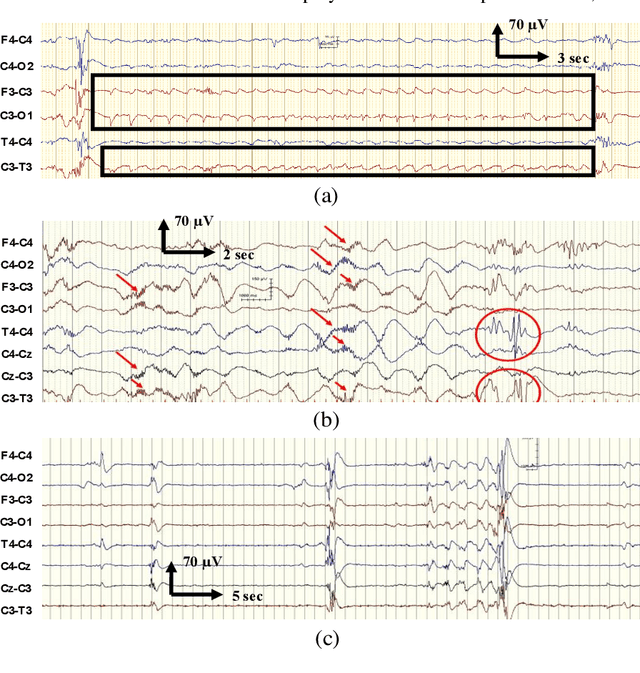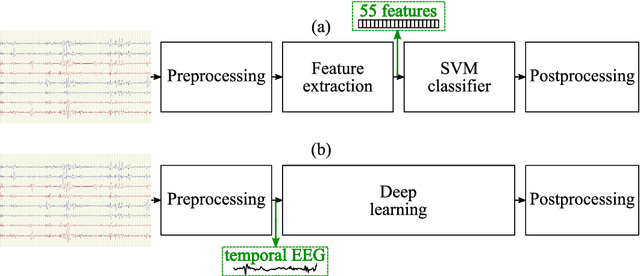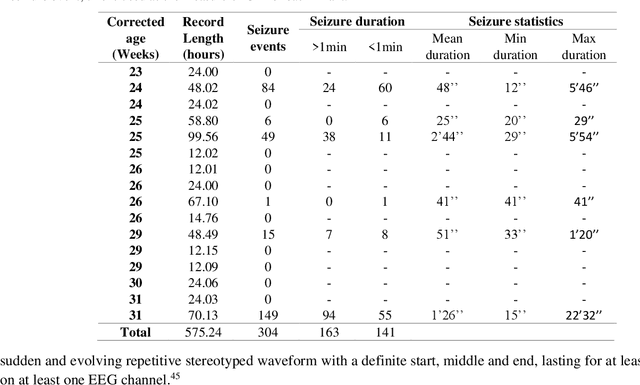Francesco Pisani
Motion Magnification Algorithms for Video-Based Breathing Monitoring
Nov 29, 2022Abstract:In this paper, we present two video processing techniques for contact-less estimation of the Respiratory Rate (RR) of framed subjects. Due to the modest extent of movements related to respiration in both infants and adults, specific algorithms to efficiently detect breathing are needed. For this reason, motion-related variations in video signals are exploited to identify respiration of the monitored patient and simultaneously estimate the RR over time. Our estimation methods rely on two motion magnification algorithms that are exploited to enhance the subtle respiration-related movements. In particular, amplitude- and phase-based algorithms for motion magnification are considered to extract reliable motion signals. The proposed estimation systems perform both spatial decomposition of the video frames combined with proper temporal filtering to extract breathing information. After periodic (or quasi-periodic) respiratory signals are extracted and jointly analysed, we apply the Maximum Likelihood (ML) criterion to estimate the fundamental frequency, corresponding to the RR. The performance of the presented methods is first assessed by comparison with reference data. Videos framing different subjects, i.e., newborns and adults, are tested. Finally, the RR estimation accuracy of both methods is measured in terms of normalized Root Mean Squared Error (RMSE).
Deep Learning for EEG Seizure Detection in Preterm Infants
May 28, 2021



Abstract:EEG is the gold standard for seizure detection in the newborn infant, but EEG interpretation in the preterm group is particularly challenging; trained experts are scarce and the task of interpreting EEG in real-time is arduous. Preterm infants are reported to have a higher incidence of seizures compared to term infants. Preterm EEG morphology differs from that of term infants, which implies that seizure detection algorithms trained on term EEG may not be appropriate. The task of developing preterm specific algorithms becomes extra-challenging given the limited amount of annotated preterm EEG data available. This paper explores novel deep learning (DL) architectures for the task of neonatal seizure detection in preterm infants. The study tests and compares several approaches to address the problem: training on data from full-term infants; training on data from preterm infants; training on age-specific preterm data and transfer learning. The system performance is assessed on a large database of continuous EEG recordings of 575h in duration. It is shown that the accuracy of a validated term-trained EEG seizure detection algorithm, based on a support vector machine classifier, when tested on preterm infants falls well short of the performance achieved for full-term infants. An AUC of 88.3% was obtained when tested on preterm EEG as compared to 96.6% obtained when tested on term EEG. When re-trained on preterm EEG, the performance marginally increases to 89.7%. An alternative DL approach shows a more stable trend when tested on the preterm cohort, starting with an AUC of 93.3% for the term-trained algorithm and reaching 95.0% by transfer learning from the term model using available preterm data.
Markov Chain Modeling and Simulation of Breathing Patterns
Oct 05, 2016



Abstract:The lack of large video databases obtained from real patients with respiratory disorders makes the design and optimization of video-based monitoring systems quite critical. The purpose of this study is the development of suitable models and simulators of breathing behaviors and disorders, such as respiratory pauses and apneas, in order to allow efficient design and test of video-based monitoring systems. More precisely, a novel Continuous-Time Markov Chain (CTMC) statistical model of breathing patterns is presented. The Respiratory Rate (RR) pattern, estimated by measured vital signs of hospital-monitored patients, is approximated as a CTMC, whose states and parameters are selected through an appropriate statistical analysis. Then, two simulators, software- and hardware-based, are proposed. After validation of the CTMC model, the proposed simulators are tested with previously developed video-based algorithms for the estimation of the RR and the detection of apnea events. Examples of application to assess the performance of systems for video-based RR estimation and apnea detection are presented. The results, in terms of Kullback-Leibler divergence, show that realistic breathing patterns, including specific respiratory disorders, can be accurately described by the proposed model; moreover, the simulators are able to reproduce practical breathing patterns for video analysis. The presented CTMC statistical model can be strategic to describe realistic breathing patterns and devise simulators useful to develop and test novel and effective video processing-based monitoring systems.
 Add to Chrome
Add to Chrome Add to Firefox
Add to Firefox Add to Edge
Add to Edge